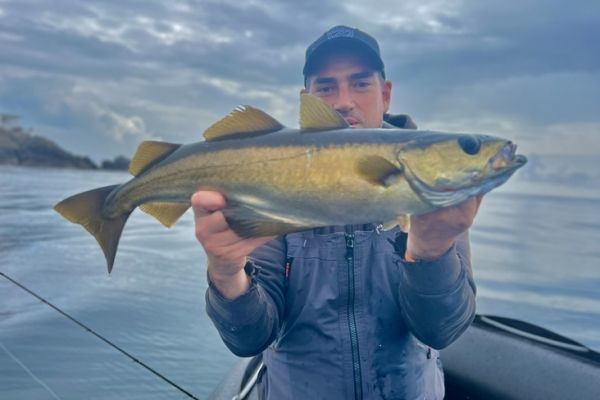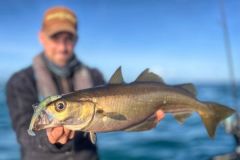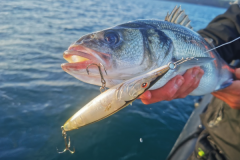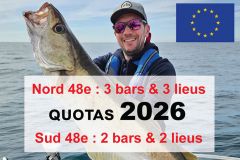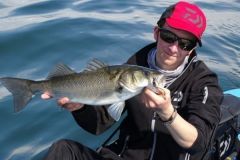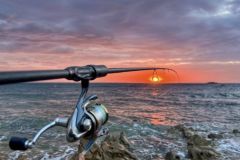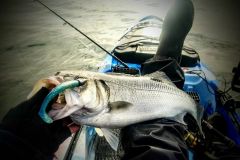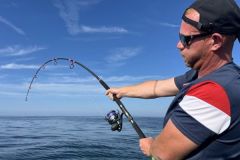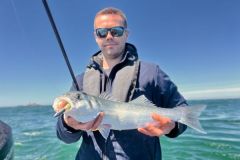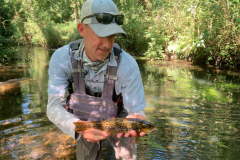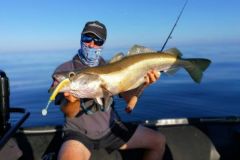Why is pollock harder to catch in summer?
The arrival of summer brings a rise in water temperature. This reduces the amount of oxygen in the water and alters fish behavior.
As far as pollack are concerned, we all know that this species appreciates cool waters. That's why they migrate to deeper waters as soon as the water warms up.
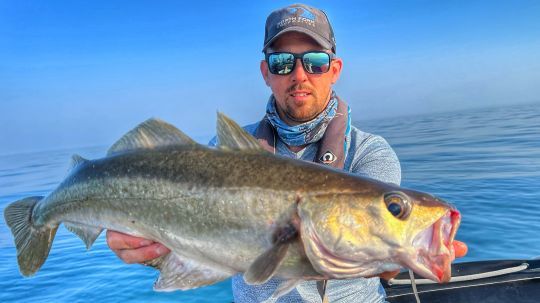
Extremely bright light can also be a factor that drives them out of shallow areas near the coast and into the depths.
Where to find the yellow spot in summer?
Given the constraints associated with this fish, I naturally turn to deep-sea areas during the summer season. The wrecks at the bottom of the English Channel are excellent shelters for yellows in summer.
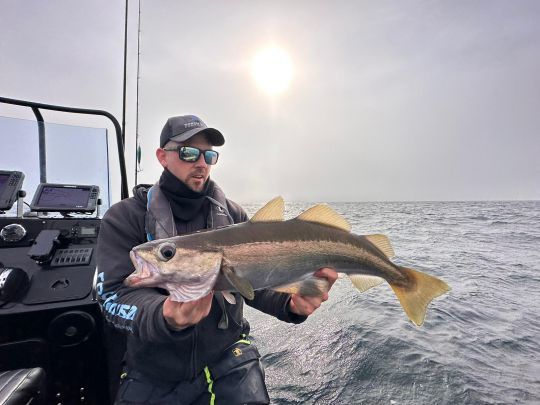
I mainly target those deeper than 30 meters, with a clear preference for the 50 to 60 meter zone. There, the cooler water attracts yellows, which have fled coastal areas that have become too hot.
But that's not the only place I fish for pollack in summer.
The Channel Islands are also excellent spots. Whether around Guernsey, Jersey or Alderney, the area's strong currents keep the water fresh and oxygenated.
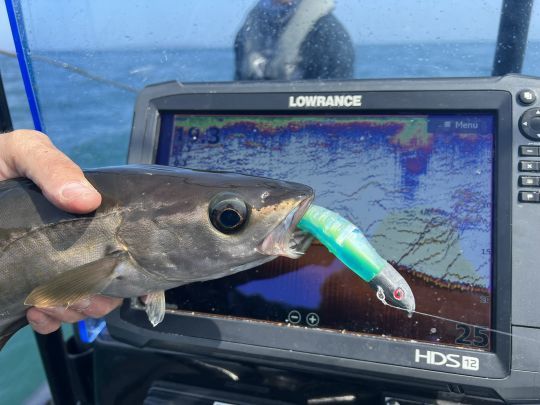
Added to this is a larger population of lake trout than on the French coast, which means you can have fun on some great deposits, while remaining at depths compatible with no-kill fishing.
What techniques and lures should you use?
Whenever I fish beyond a depth of 30 metres, I always use the elevator technique. It consists in making contact with the bottom, then bringing the lure up in a continuous retrieve through the water column. It's important to vary the retrieve speed and interrupt it with a few pauses to trigger the bites.
Jigs, but also shad-type soft lures, are very effective in these conditions. Personally, I prefer Ragot's Herring jig, as well as Fiiish's Black Minnow and Crazy Sand Eel 220.
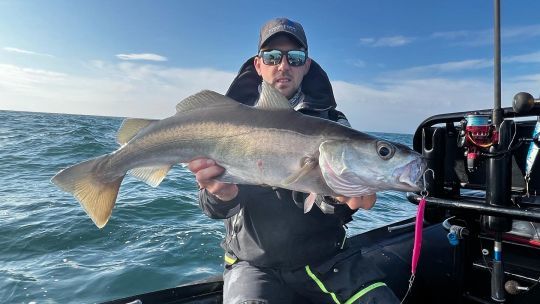
In shallower areas, I opt for slow linear animations close to the bottom. It's important to take into account the diet of lake trout in summer. At this time of year, sandeels have often left the area, making way for bluefish such as sardines and sprats. This is why shads are generally more effective than slugs. The Master Shad and the Black Minnow in sizes 120 and 140 are among my best-sellers.

 /
/ 